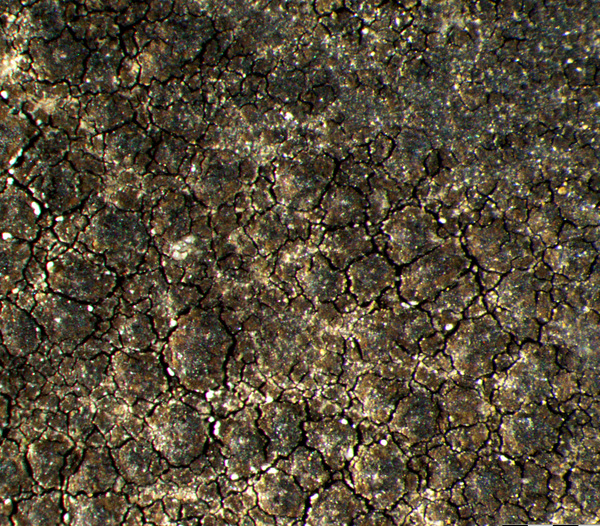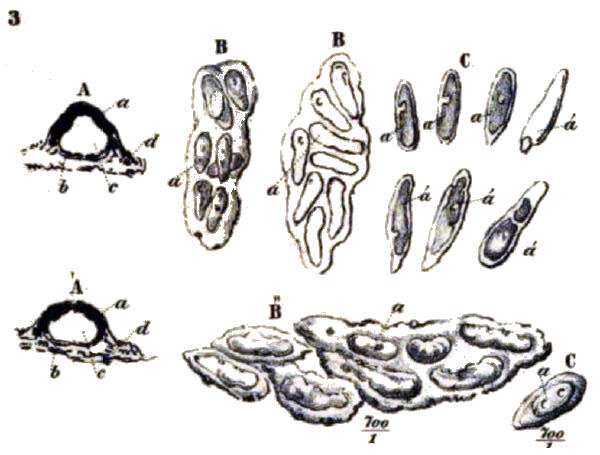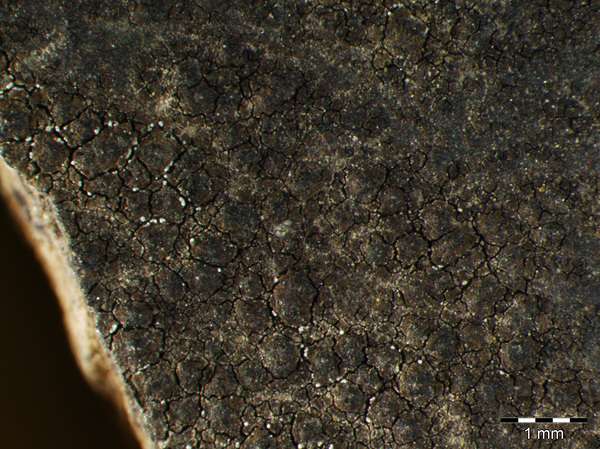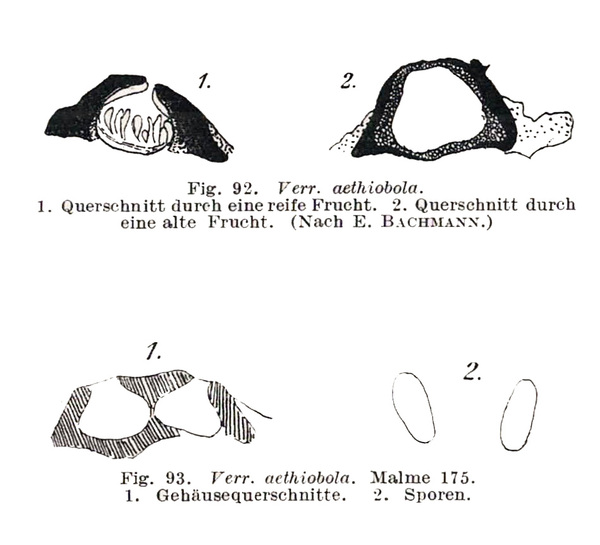Verrucaria aethiobola Wahlenb.
in Ach., Meth. Lich. Suppl.: 17, 1803.
Synonyms: Lithocia aethiobola (Wahlenb.) Stein; Pyrenula aethiobola (Wahlenb.) Ach.; Verrucaria aquilella Nyl.; Verrucaria catalepta Schaer. non (Ach.) Spreng.; Verrucaria chlorotica Hepp non Ach.; Verrucaria fuscocinerascens Nyl.; Verrucaria hibernica Zschacke; Verrucaria hydrela var. aethiobola (Wahlenb.) A. Massal.; Verrucaria laevata Ach. non auct. nec sensu Körb.; Verrucaria viridicana Erichsen
Distribution: N - Ven (Nascimbene & Nimis 2007, Nascimbene 2008, Nascimbene & al. 2009), TAA (Nascimbene & al. 2022), Lomb, Piem (Isocrono & al. 2004), Emil (Fariselli & al. 2020). C - Tosc, Umb (Panfili 2007), Sar (Rizzi & al. 2011, Giordani & al. 2013).
Description: Thallus crustose, episubstratic, not subgelatinous when wet, continuous to usually strongly rimose or cracked-areolate, (35-)50-120 μm thick, grey-green or pale to dark brown, smooth, matt to slightly glossy, up to several cm wide. Cortex poorly developed, paraplectenchymatous, with or without a brown pigment; medulla very thin, inconspicuous, without a black basal layer. Perithecia forming 0.2-0.5 mm wide, low to rather distinct projections, covered by a thalline layer on the flanks, with the black, naked, convex apex exposed, the ostiolar region visible as a pale, 20-110 μm wide, flat or depressed spot. Involucrellum limited to the apex or well-developed and spreading outwards and downwards almost to base-level; cell lumina in lower part of involucrellum not much enlarged, completely carbonised or with dotted pigmentation; exciple subglobose, 0.14–0.22 mm across, the wall c. 20 µm thick, colourless or patchily pale brown in lower part; hamathecium of c. 20 µm long periphyses and periphysoids, interascal filaments absent; hymenial gel hemiamyloid, I+ red (I+ blue at very low concentrations of I), K/I+ blue. Asci 8-spored, clavate, I-, fissitunicate, the wall thickened above, with an ocular chamber, dehiscent by extrusion of an endotunica to form a delicate rostrum, Verrucaria-type. Ascospores 1-celled, hyaline, ellipsoid, (21.5-)24-29(-35) x (8.5-)10.5-12.5(-14.5) μm, with a thin perispore. Photobiont chlorococcoid, the cells irregularly dispersed (not arranged in columns). Spot tests: K-, C-, KC-, P-, UV-. Chemistry: without lichen substances.Note: a widespread species, both in Northern Europe and in the Alps, periodically submerged on hard, mostly siliceous rocks along creeks. According to Thüs (in litt.) the epithet aethiobola was used for two genetically well-separated taxa: V. aethiobola s.str. and V. cernaensis, and it is likely that at least some of the lowland records from Italy could refer to the latter species. Some dubious records from Southern Italy reported by Nimis (1993: 732) are not accepted here. See also note on V. cataleptoides.
Growth form: Crustose
Substrata: rocks
Photobiont: green algae other than Trentepohlia
Reproductive strategy: mainly sexual
Periodically submerged (e.g. in creeks)
Commonnes-rarity: (info)
Alpine belt: absent
Subalpine belt: rare
Oromediterranean belt: very rare
Montane belt: rare
Submediterranean belt: very rare
Padanian area: absent
Humid submediterranean belt: very rare
Humid mediterranean belt: absent
Dry mediterranean belt: absent
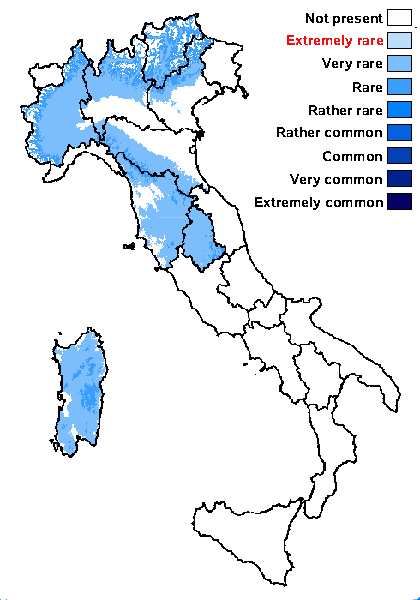
Predictive model
Herbarium samples
Growth form: Crustose
Substrata: rocks
Photobiont: green algae other than Trentepohlia
Reproductive strategy: mainly sexual
Periodically submerged (e.g. in creeks)
Commonnes-rarity: (info)
Alpine belt: absent
Subalpine belt: rare
Oromediterranean belt: very rare
Montane belt: rare
Submediterranean belt: very rare
Padanian area: absent
Humid submediterranean belt: very rare
Humid mediterranean belt: absent
Dry mediterranean belt: absent

Predictive model
| Herbarium samples |
 Index Fungorum
Index Fungorum
 GBIF
GBIF
